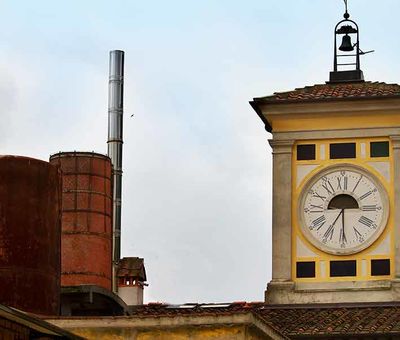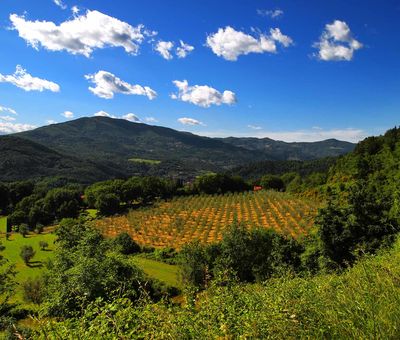The factory town
The Bisenzio has always driven the water wheels of the mills for grains and chestnuts, filled head and tail races for ironworks and copper mills, provided clear water to work paper and fed the turbines of the woollen mills. The most important factories in Vaiano were established in the vicinity of the grand weirs, like the Bardazzi mill, which is still active today. The northerly winds that blow through the valley are fundamental: dozens of drying mechanisms could be found around Vaiano, La Briglia or La Cartaia. Here, wool fabrics were hung to dry; even earlier, leafs of exquisite paper produced throughout the 1700s by the Gamberame, La Cartaia and La Briglia paper mills would have been left to dry here as well. And the fuller’s earth? This particular clay had fulling capabilities, making it perfect for softening and compacting fabrics. It was so that fulling machines were born, like the room with tubs that was discovered at the Vaiano Abbey. The entire Val di Bisenzio is dotted with jewels of industrial archaeology, cathedrals of late 19th-century production, like the factory-town of La Briglia, whose own walls were once home to a mill, a fulling factory, a paper mill, an ironworks, and a textile factory: a rare example of an industrial community in Manchesterian style.
Vaiano at your dinner table
Rediscovering these stories means following the currents and the noise of the mills’ turbines, and to do it one needs only to head to Madonna della Tosse, the entrance to the Tuscan-Emilian Apennines: visitors are invited to traverse and explore the Bisenzio Valley, rich with hamlets, colours, and flavours.
Among these, the first to inebriate is the fragrance of freshly baked biscotti, which accompanies the visitor as they discover an ancient mill (the one “down there”) made completely of wood, where the ancient grindstones still produce excellent flour. Continuing the walk through town, we discover one-of-a-kind corners of nature: the valley opens like a book, with olive tree groves stretching out across the territory, recalling the production of high-quality extra virgin olive oil.
Looking up, the landscape changes, becoming an intense green colour which opens into a vast plateau, where horses and cows graze freely, including Calvana cattle, recently rediscovered and valued for its tasty meat.





